Fon Religion
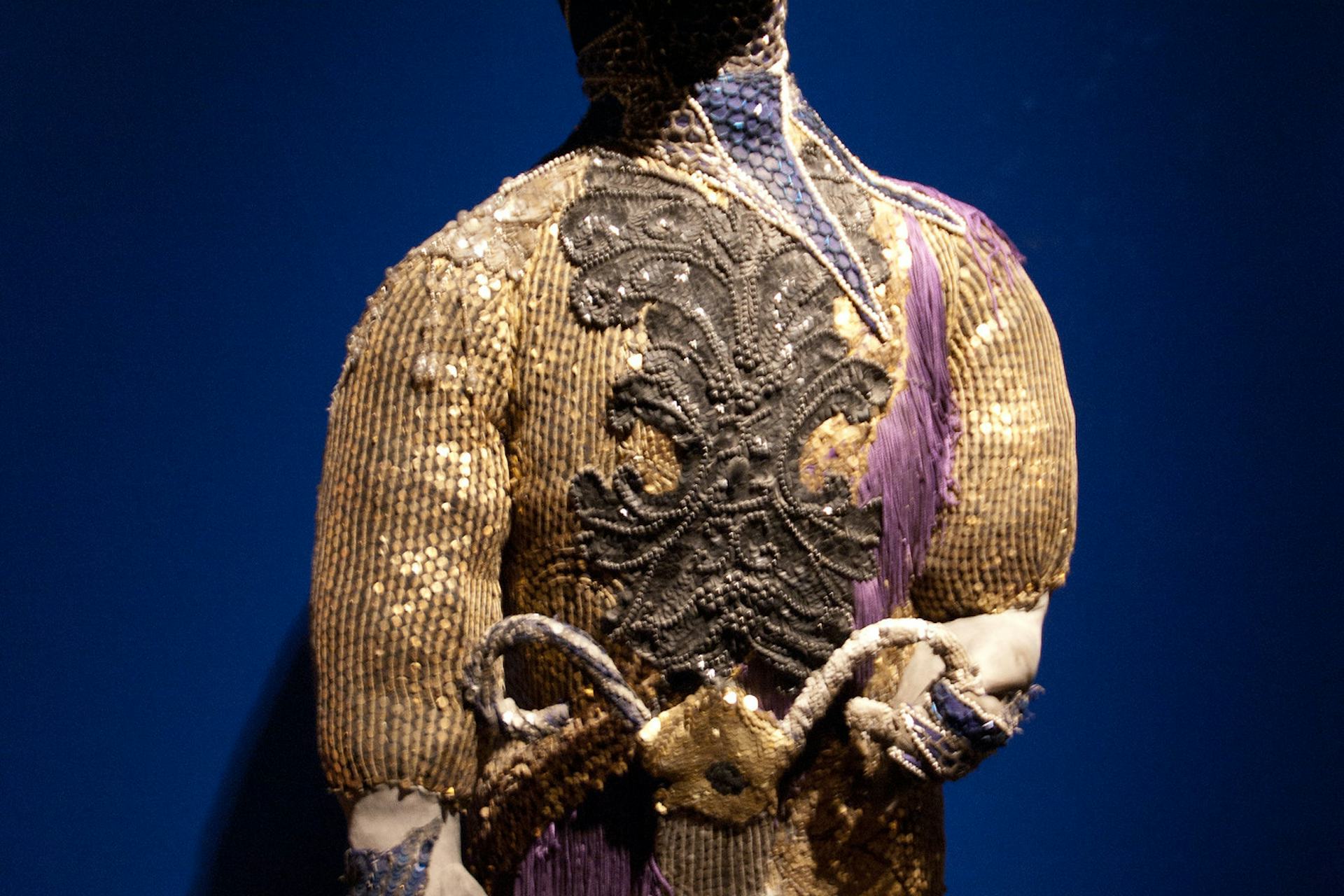
Voodoo sculpture from Haiti constructed around a real human skull from an exhibition in Berlin, photographed by Thomas Quine (2010).
Flickr CommonsCC BY-SA 2.0Overview
The Fon religion encompasses the belief structure and religious practices of the Fon people of West Africa. The Fon are primarily concentrated in southern Benin, though the culture also extends to southwestern Nigeria and Togo. The Fon people are closely associated with the Dahomey kingdom, which existed from the early 17th century to the beginning of the 20th century.
Cosmogony
The Fon cosmogony is not as vast or detailed as that of other African mythologies. It states that in the beginning, before the creation of the universe, Nana-Buluku was alone in the void. It was Nana-Buluku who decided to form the universe (though not the earth). She gave birth to twin gods, Mawu and Lisa, who took over the task of creating the earth, sky, seas, and all life.
Pantheon
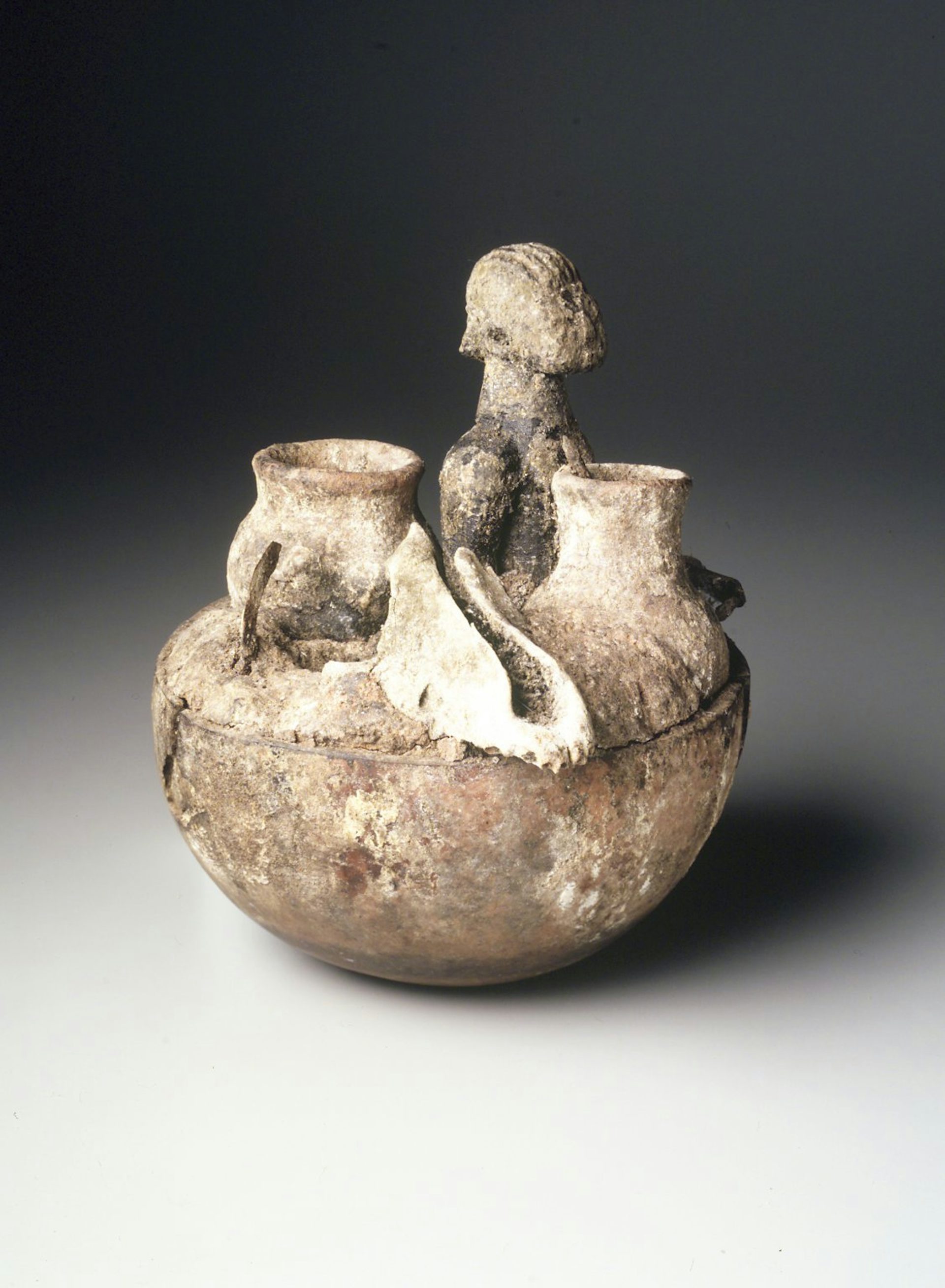
A medicine vessel made from a calabash (gourd), by Ewe artist, (early 20th century).
Brooklyn MuseumCC0Traditional Fon religion revolves around the worship of deities known as vodun. The two most important vodun are the primordial deities responsible for the creation of the universe and everything in it: the Supreme Being, Nana-Buluku, and the Creator, Mawu-Lisa. The other major vodun are Mawu-Lisa’s children, who are responsible for the four major pantheons: earth, thunder, sky, and sea.
(For a more complete list of vodun, see here.)
Nana-Buluku
Nana-Buluku is the Supreme Being of the Fon religion. She was responsible for the creation of the universe and the birth of the chief deities, Mawu and Lisa. After giving birth to Mawu and Lisa, Nana-Buluku stepped away from the rest of the creation process and handed over her authority to her children.[1]
Major Vodun
The Fon pantheon is dominated by the creator god, Mawu-Lisa, and the god’s seven children.
Mawu-Lisa is a combination of two major deities: Mawu, the female goddess of the night and moon, and Lisa, the male god of the day and sun. The two gods merged into one, and the rest of the vodun were born from their union. Mawu-Lisa is the head of the sky pantheon.[2]

A figure of Sakpata, the god of earth, photographed by Sostoli, (2017).
Wikimedia CommonsCC BY-SA 4.0Sakpata, the god of smallpox and the earth, is another powerful vodun. He is the ruler of the earth pantheon and fathered the rest of the earth deities.[3] His brother Sogbo (also called Hevioso) became chief of the thunder pantheon, as well as the sea pantheon (due to the fact that his children are all sea deities).[4]
Gu, the god of iron and warfare, is the fifth-born son of Mawu-Lisa. He is closely associated with Lisa, the male aspect of the Creator; Lisa used Gu to deliver knowledge of blacksmithing to humankind.[5] Because iron and metalwork have long been important resources for the Fon people, Gu is a highly respected and feared vodun.
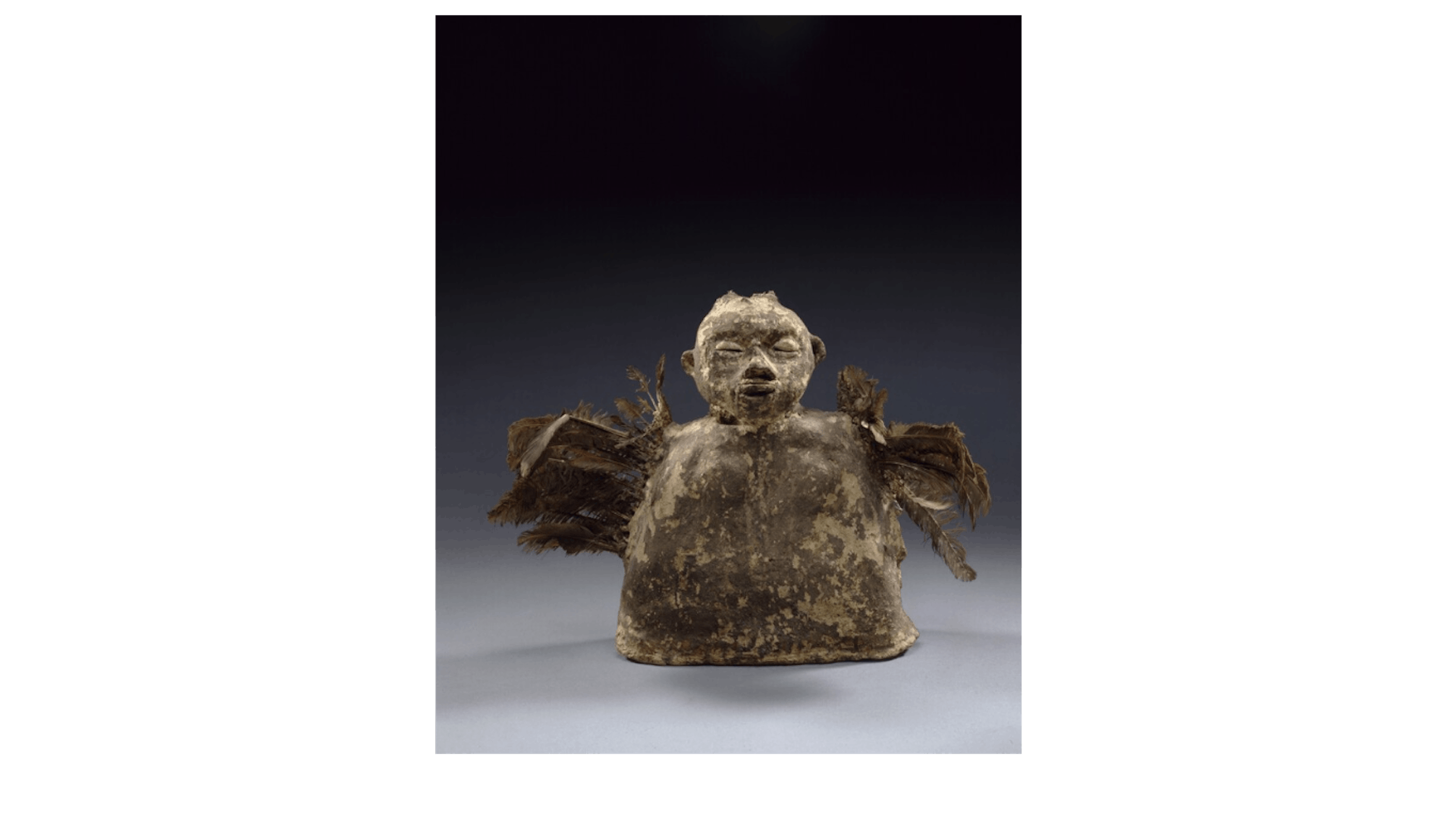
A sculpture of Legba as the messenger of the gods, by West African artist (n.d).
Afrika Museum Berg en DalCC BY-SA 4.0Legba is another important and popular vodun. The youngest and favorite son of Mawu-Lisa, he is a complex figure in religion and mythology. Legba is mostly known as a trickster god who thrives on confusion and chaos, but he is also the messenger of the gods. He alone can translate divine messages from Fa, the god of fate and divination.
Lesser Vodun
Fa, the god of fate, is not considered a major figure in the Fon pantheon because he is not one of Mawu-Lisa’s children. Nevertheless, he still holds an important position in Fon religion due to his connection with divination. Practitioners of divination consult oracles of Fa, called bokonon, in order to receive guidance and advice from the god.[6]
Mythology
The myths of the Fon religion are vast and diverse. Most accounts agree that Nana-Buluku created the universe, while her child—the dual god Mawu-Lisa—created the earth, skies, seas, and humankind. Mawu-Lisa’s children were then given control of these various realms.
The Creation of the World
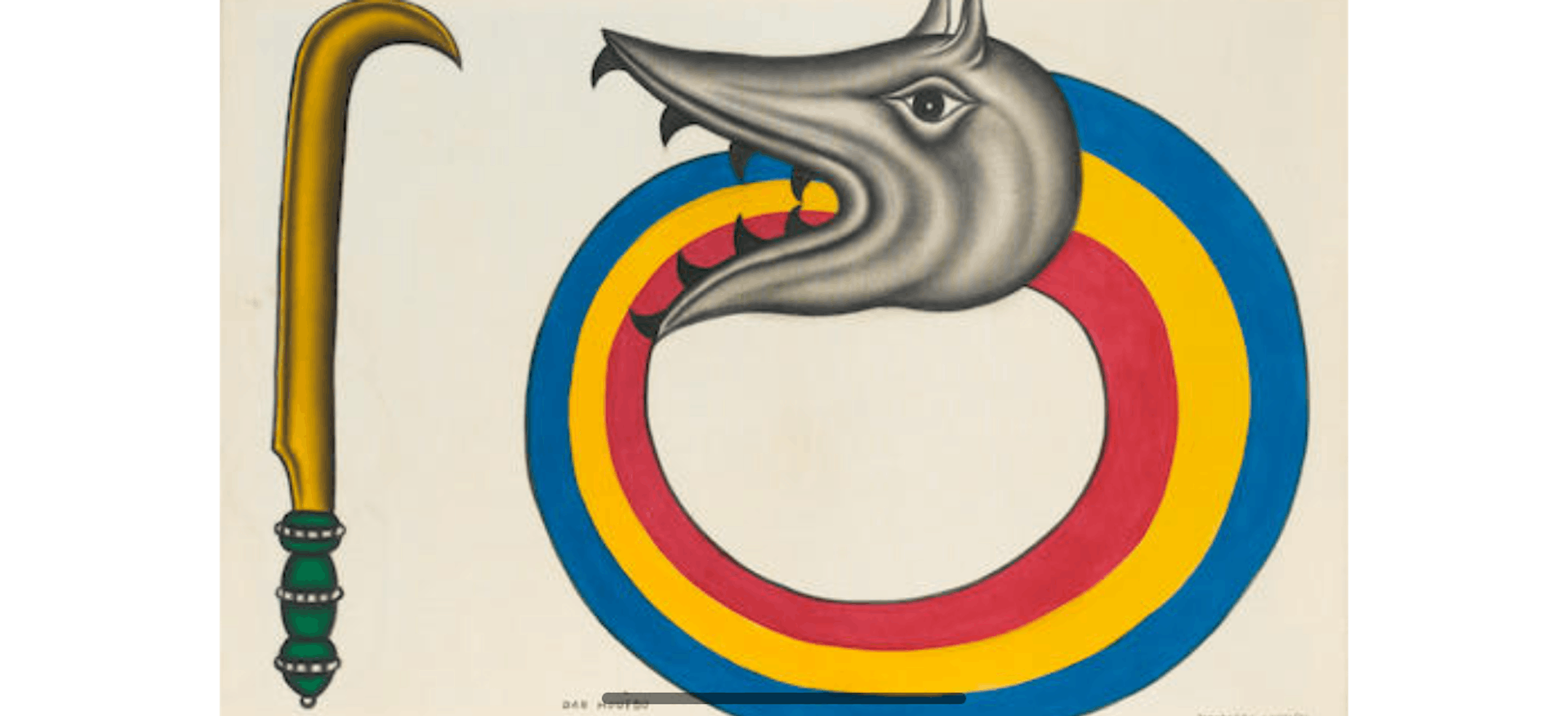
Dan-Aïdo Houèdo (Rainbow Serprent) by Beninese artist, Cyprien Tokoudagba (20th century).
BonhamsCopyrightOnce Nana-Buluklu had created the universe, Mawu-Lisa stepped in and began forming the earth, sky, and seas. To create the earth, Mawu-Lisa rode on the back of a great cosmic serpent named Aido-Hwedo; as the god circled the earth, the body of the snake sculpted the landscape.
When the earth was complete, Mawu-LIsa ordered Aido-Hwedo to take up residence beneath the earth to hold it in place. To this day, earthquakes are thought to be the result of the snake repositioning itself.[7]
The Creation of Humanity
According to Fon mythology, the creation of humanity took four days to complete. On the first day, Mawu-Lisa sculpted human beings out of clay and gave birth to the seven major vodun. On the second day, the deity ensured that the earth was habitable for humans and other life.[8]
The next day, Mawu-Lisa gifted humanity with awareness and the ability to see and speak. Finally, on the last day of creation, Mawu-Lisa bestowed upon humankind the knowledge they would need to survive on their own.
The Division of the World
Once Mawu-Lisa had finished creating the world and humankind, the deity set about distributing the realms of the universe to the other vodun. Each of Mawu-Lisa’s seven children received power over a particular realm.
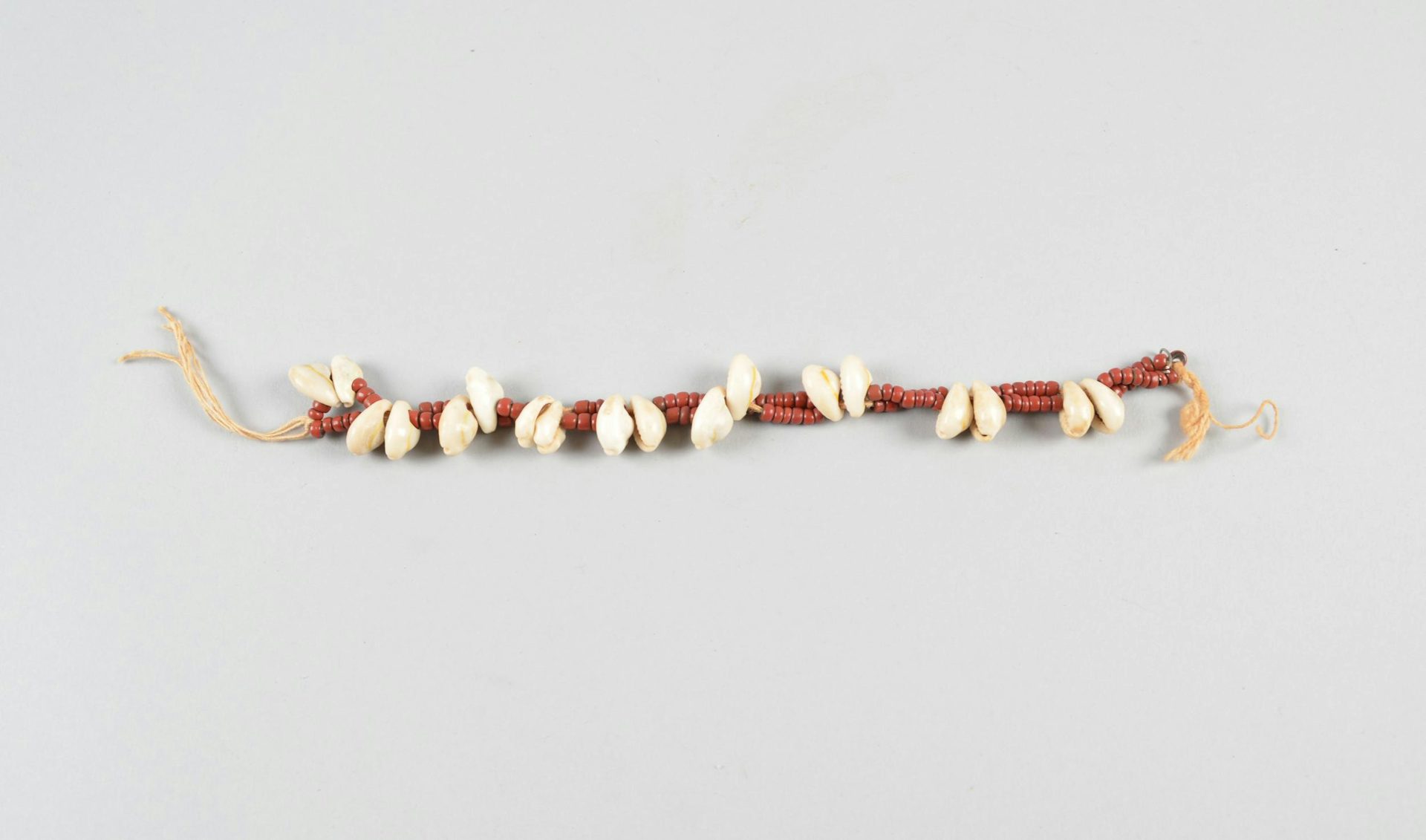
An example of a beaded anklet worn by devotees of the god Hevioso (Sogbo), by Fon artist, (n.d).
British MuseumCC BY-NC-SA 4.0Mawu-Lisa’s firstborn son, Sakpata, received dominion over the earth, while his brother Sogbo (or Hevioso) received the thunder pantheon. Other children were given control of important skills and knowledge, such as Age, who became the god of hunting.[9]
Mawu-Lisa’s youngest child, Legba, did not receive a specific realm; instead, he became the messenger of the gods and the gatekeeper between the world of humans and vodun.
Beliefs and Worship
Divination
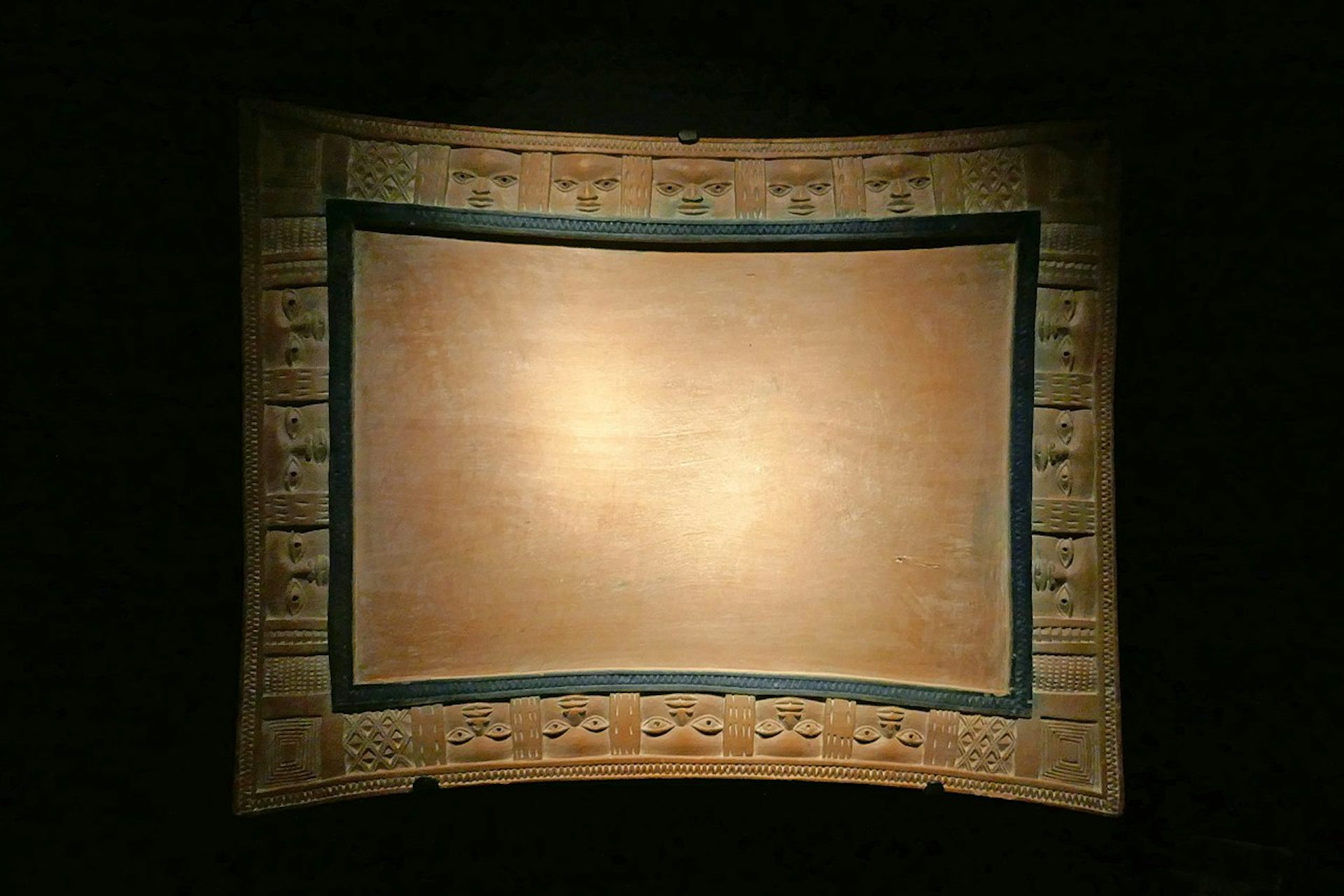
A divination tray belonging to Guédégbé from the Musée du quai Branly, by Fon artist and photographed by Ji-Elle (end of 19th century).
Wikimedia CommonsCC BY-SA 4.0Within the Fon pantheon, Fa is the god of divination and fate. He is served by bokonon—diviners or oracles—who occupy an important place in traditional Fon religion. Kings commonly consult these oracles on all significant matters pertaining to their kingdoms.[10]
To begin divining, a bokonon must first invoke the vodun and ask for their blessing. The oracle then enacts a complex ritual to request knowledge of their fate from Fa. Since Legba is the only god who can decipher the words of Fa, the oracle must also consult Legba. Often the bokonon will speak in parables or allegories and will sing songs in honor of the deities throughout the divination process.
There are three stages of Fa divination. The first is the consultation of Fa (Fá titê or Fá kikan); the second is the explication of the prophecy (Vô dide); and the last stage is the performance of sacrifices (Vô sisá or adra).[11]
Bochio
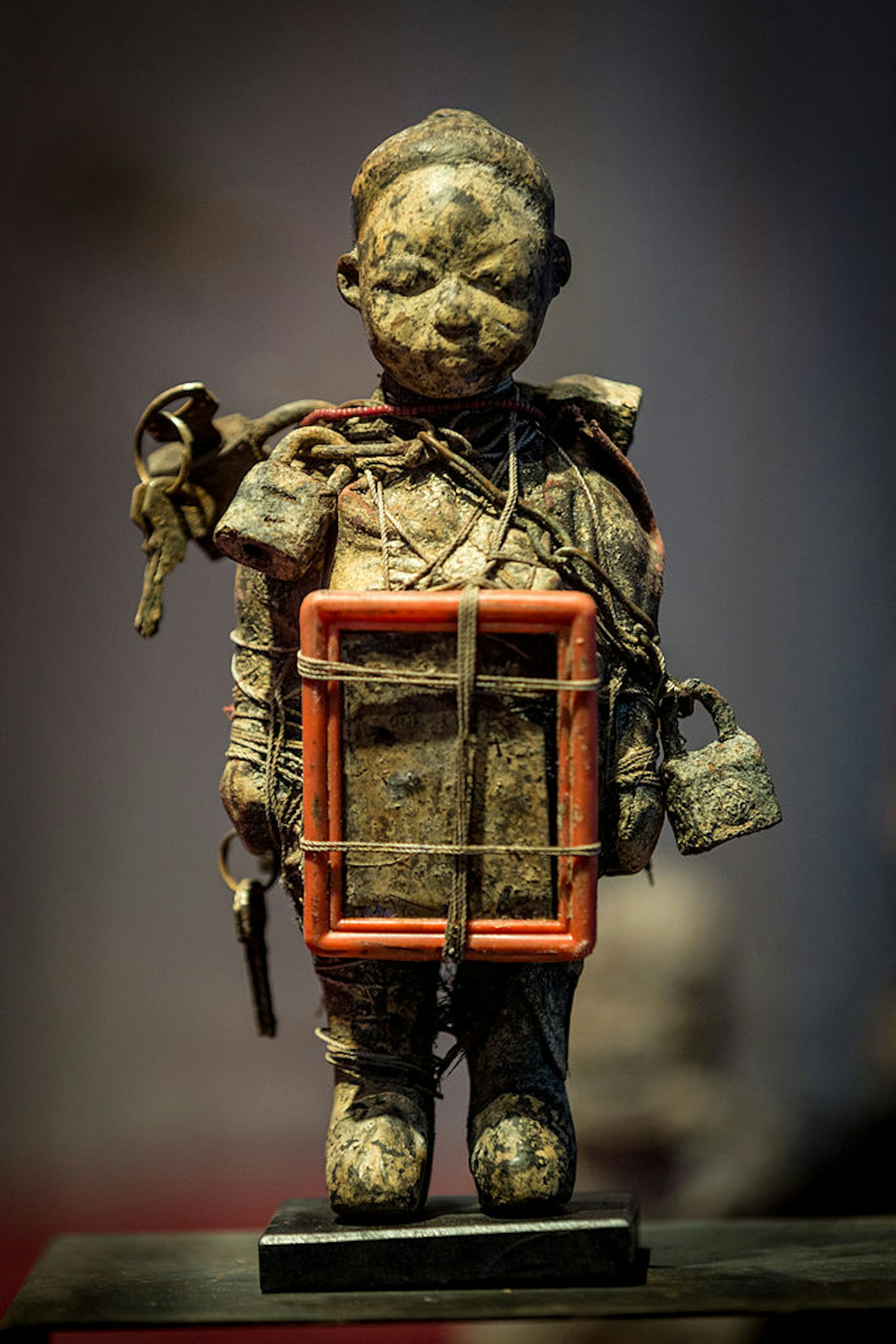
A Wutuji bochio statuette in the Musée Vodou collection, Arbogast, Strasbourg, made by Ewe artist and photographed by Claude TRUONG-NGOC, (2014).
Wikimedia CommonsCC BY-SA 3.0A bochio is a powerful sculpture or figurine that represents the spiritual forces of the vodun, or that serves as a vessel for the vodun to inhabit. The name roughly translates to “empowered cadaver.”[12] Practitioners of vodun worship commission these bochio sculptures at the behest of oracles.
The bochio is created in the image or guise of the god whom the worshipper intends to honor. The sculpture is then hammered into the ground wherever the god’s intervention is needed—often outside the entrance of a house. The worshipper provides the figure with offerings in order to gain the god’s favor and assistance.
Vodun Diaspora
Haitian Vodou
The most recognizable example of syncretism between West African religion and Roman Catholicism is Haitian Vodou, which has preserved and adapted many African religious beliefs and practices. Vodou centers on the worship of “spirits”; according to Robert S. Ellwood, “those who practice the religion say they are ‘serving the spirits.’”[13]
For the most part, practitioners of Haitian Vodou are monotheistic, believing in a single god whom they call Bondye. However, there is also some worship of lesser deities, known as the lwa or loa. These lesser deities are believed to be ancestors and are organized into “nations.” There are said to be two nations: one consisting of benevolent spirits and the other consisting of powerful and energetic spirits (known as “hot ones”).[14]
Vodou practitioners typically serve the spirits by lighting candles, giving offerings, and saying prayers. Some rituals involve the sacrifice of an animal, such as a chicken, while others use drumming, feasting, and dancing to encourage spiritual possession. These rituals are overseen by Vodou priests and priestesses, known as houngans and mambos, respectively.
Certain aspects of the Vodou religion are thought to be more sinister. Some practitioners, for example, have been accused of “using the bodies of the recently deceased for slave labor (zombies).”[15]
Popular Culture
Though the Fon religion is not frequently represented in popular culture, the syncretic religions that stemmed from it are. Voodoo is especially popular in Western media, where it is often portrayed in a negative light. For example, the god Papa Legba appears in the television series American Horror Story: Coven as a malevolent and dangerous character.
Likewise, in the Disney film The Princess and the Frog, the character of Doctor Facilier is a powerful conjuror who uses his knowledge of Voodoo to carry out his sinister plans.